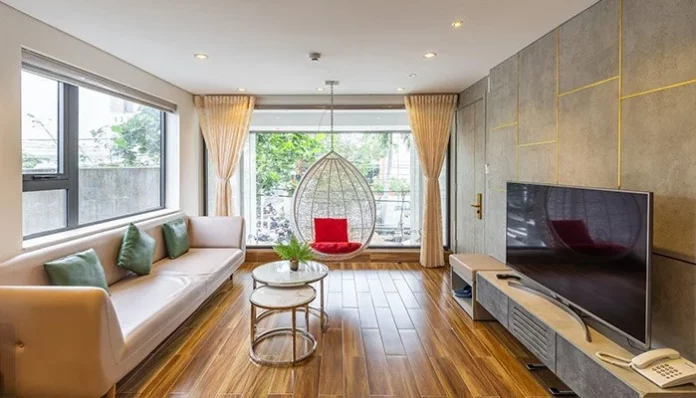
Your 8-step Guide to Discovering the Ideal Long-term Apartment Rental in Da Nang
A little update for 2024:
It’s no longer 2023, with multiple letting agents fighting over you to move into their apartments… :'(
Visa Agents have become a little lazy and it’s not uncommon for apartments to have reached almost western level pricing… I don’t know about you, but a mouldy, half furnished studio that’s on a busy corner doesn’t scream Luxury or Premium Beachside Apartment…
Don’t worry though, all the advice for finding your perfect, (and more importantly, appropriately priced), apartment still applies!
But… you’ll have to be a little more proactive, and some of the best deals aren’t to be found online, you’ll find them by reaching out to apartment blocks in person.
To give you some perspective on local pricing, you can get a new 3-storey town-house on the other side of the river for around 6-8mil. So don’t get fooled into paying 10mil for a musty old studio with brown sheets & towels.
You’d be better off staying an 1 bedroom apartment hotel which is what I did for two weeks for only $230, 3min from the beach with rooftop pool, sauna and steam-room. Where??? I here you say? Monalisa Apartments – Da Nang (Trip.com)
*Back to out How To Find an Apartment in Da Nang Quick Guide!
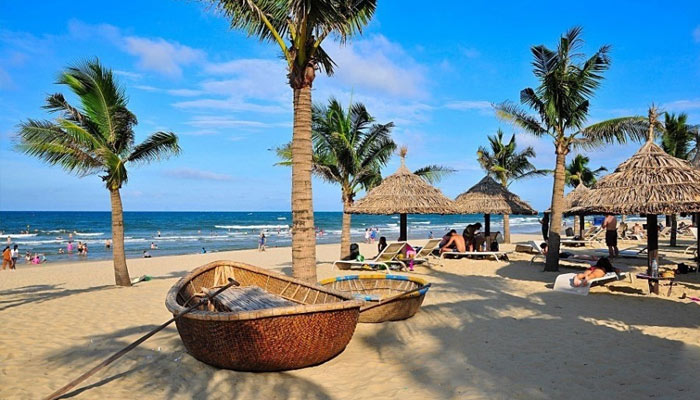
Da Nang Apartment Hunting!
I’m excited to share with you how I managed to find an amazing long-term apartment rental in the stunning city of Da Nang, Vietnam.
If you’re considering an extended stay in Da Nang, then this quick-guide will have you navigating your way into a shiny new apartment in less than 5 minutes.
Visiting Da Nang Soon? – Don’t forget to bookmark our Da Nang – Travel Guides, Tips & More Page here.
When I chose to move to Da Nang for a year to embrace remote work and immerse myself in the rich Vietnamese culture, I knew I needed a cosy and reasonably priced place to call home.
So, I embarked on the search for the perfect long-term apartment rental and created this article to make your move effortless.
Step 1: Investigate different areas
Before delving into the rental market, I dedicated time to exploring the various neighbourhoods in Da Nang.
I took into account factors such as beach access, local facilities, security, and public transport options.
In the end, I was smitten with the An Thuong area (also be called My An), known for its diverse blend of expats and locals and its plethora of eateries and stores.
Other areas I considered in Da Nang:
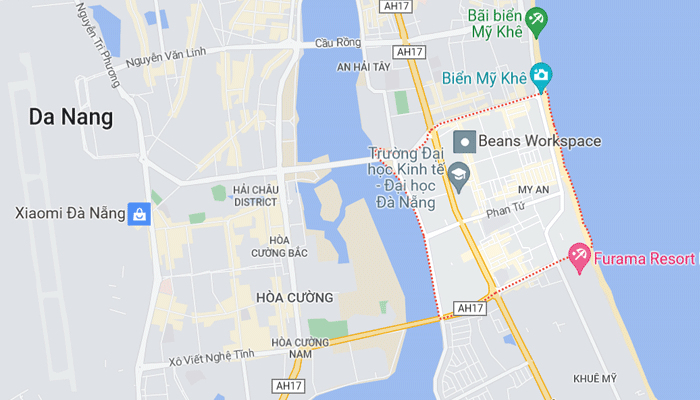
An Thuong (My an)
Eventually, I found myself drawn to the An Thuong area, renowned for its eclectic mix of expats and locals, and its abundance of restaurants and shops. This neighbourhood is just a brief stroll from the famous My Khe Beach and boasts a vibrant, yet laid-back atmosphere.

Son Tra
Additionally, I looked into Son Tra, a scenic peninsula adorned with lush greenery and breathtaking beaches. While this area provides a more calm and peaceful setting, it is somewhat removed from the city centre and may not be suitable for those requiring easy access to a diverse array of amenities.
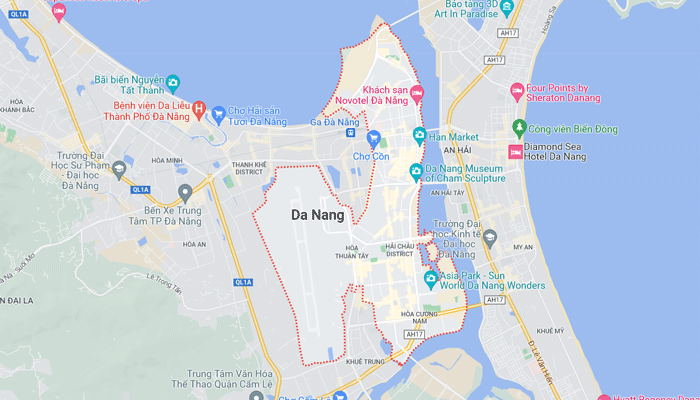
Hai Chau
I also ventured into Hai Chau, the city centre, characterised by its busy streets, historic landmarks, and plentiful shopping opportunities. The appeal of having everything close at hand was tempting, but I ultimately opted for a more serene environment.
By dedicating time to research and visit various neighbourhoods in Da Nang, you can develop a deeper understanding of what each area offers and make a well-informed decision regarding where to concentrate your search for the ideal long-term flat rental.
Step 2: Establish a budget
In Da Nang, you’ll find a broad spectrum of apartment rental possibilities, from wallet-friendly studios to opulent penthouses.
I opted for a monthly budget of 10-12mil VND (400-500 USD), which enabled me to secure a cosy, well-furnished one-bedroom apartment with a pleasant view.
Prices for studios start from around 5mil in the My An area and increase in price as you add things like: premium furniture, a gym, a swimming pool and the quality of the building.
For 1 bedroom apartments, you can expect to add on around 2-3m VND on top of the price of the studio.
To optimise your budget, you’ll also need to incorporate extra expenses, such as utility payments, internet fees, and potential maintenance costs.
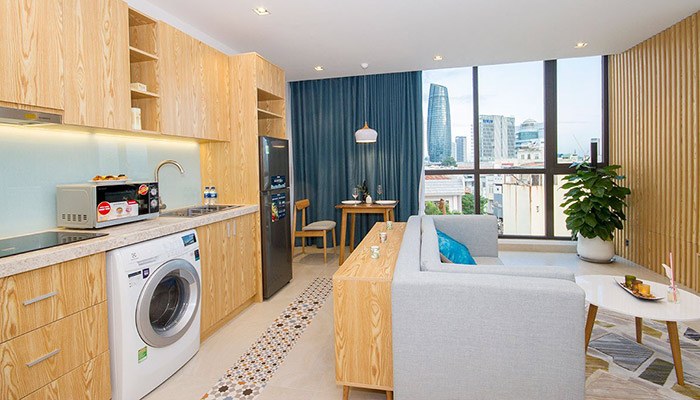
Step 3: Find Apartment Listings
Facebook & Locals are your friends when it comes to this task.
One of the most valuable resources I came across was the expat community in the area.
I joined several Facebook groups, such as “Da Nang & Hoi An Expats (Facebook)” and “Apartments For Rent in Da Nang (Facebook)” which allowed me to ask questions and obtain recommendations.
Rather than scouring through the Facebook groups, if you’re feeling lazy, you can post an Apartment Request Post with your preferred area, amenities and budget. Sieve through the spam and there are some great deals to be had!
Additionally, you can befriend a few locals who’ll provide you with the real scoop about the local rental market prices.
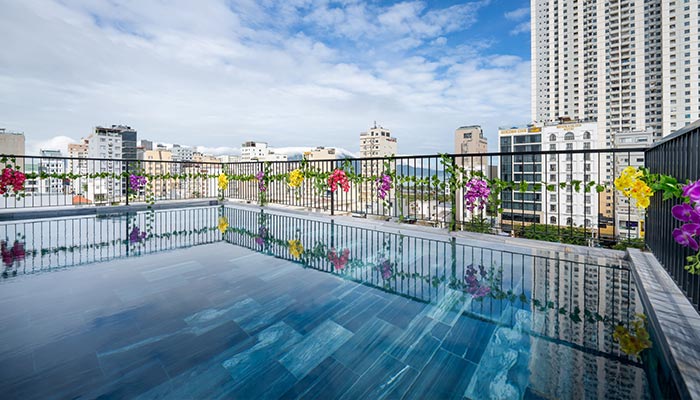
Step 4: Reach out to Hotels, Agents and Landlords directly
I contacted numerous rental agents and landlords using WhatsApp, Zalo and Facebook Messenger.
This helped me discuss my specific needs and inquire about the properties. It’s crucial to communicate in a clear and courteous manner, as this can foster a good relationship and trust with your potential future landlord.
Top Tip: While it’s logical thinking that you’d be getting a better deal from the landlord, rather than a letting-agent, as you’ll be skipping the fees. I didn’t find this applied often when reaching out to both Agent & landlord on the same room.
Unlike Thailand, Vietnam hasn’t embraced Google Maps in the same way. Hotels, Condotels and Apartments are often not to be found on maps.

Step 5: Plan Your Property Visits
With a shortlist of prospective apartments in hand, I arranged viewings with agents or landlords.
I made a point of taking photos and jotting down notes during each visit since remembering the details of every property can be difficult.
Don’t hesitate to ask questions about the lease conditions, utility expenses, and any maintenance concerns during the viewing.
Step 6: Pre-book with Airbnb?
Another option for those of you that like to have everything planned out is to book your first month on Airbnb.
I’d advise against this though for one specific reason.
Da Nang is growing at an incredible rate. There are new towers popping up everywhere and renovations are rampant.
The last thing you want is an amazing cosy apartment that’s 20 meters away from a building site.
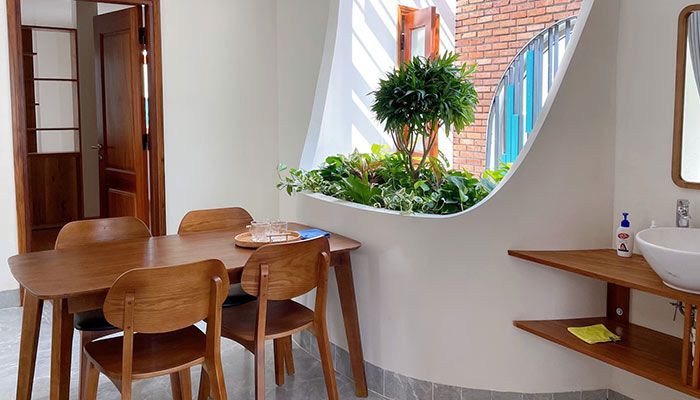
Step 7: Discuss Rental Conditions
Upon discovering the ideal apartment, I engaged in negotiations with the landlord regarding the rental conditions.
In Da Nang, it’s common practice to pay a deposit equivalent to one or two months’ rent.
Feel free to negotiate the price, lease duration, or additional perks like complimentary cleaning services or gym access. Just remember to remain respectful and rational in your requests.
Step 8: Sign the lease and settle in
After agreeing on the terms, I signed the lease, paid the deposit, and received the keys to my new residence!
Be sure to carefully examine the lease and ensure that all agreed-upon conditions are included.
Additionally, it’s a smart idea to photograph the apartment’s state before moving in to avoid any disagreements when it’s time to move out.
Da Nang Rental Guide: Conclusion
That’s the story of how I found my cosy apartment in Da Nang!
The process was simple and easy, thanks in part to the lack of tourism they’ve been experiencing recently.
I couldn’t be more thrilled with my new living space, comfy furniture, a rooftop pool with a sea view and super friendly staff greeting me every day.
I hope these tips prove helpful in your pursuit of a long-term stay in Da Nang.
Let me know in the comments if you come across any hidden apartment gems that you want to share with the nomad community.




